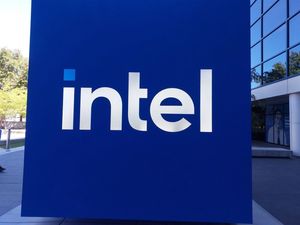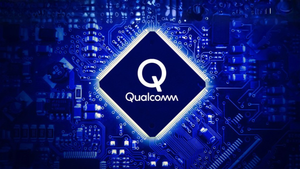
The relentless march of technological progress, long epitomized by Moore's Law, is confronting its most formidable adversaries yet within the semiconductor industry. As the world demands ever faster, more powerful, and increasingly efficient electronic devices, the foundational research and development efforts are grappling with profound challenges: the intricate art of miniaturization, the critical imperative for enhanced power efficiency, and the fundamental physical limits that govern the behavior of matter at the atomic scale. Overcoming these hurdles is not merely an engineering feat but a scientific quest, defining the future trajectory of artificial intelligence, high-performance computing, and a myriad of other critical technologies.
The pursuit of smaller, more potent chips has pushed silicon-based technology to its very boundaries. Researchers and engineers are navigating a complex landscape where traditional scaling methodologies are yielding diminishing returns, forcing a radical rethinking of materials, architectures, and manufacturing processes. The stakes are incredibly high, as the ability to continue innovating in semiconductor technology directly impacts everything from the processing power of AI models to the energy consumption of global data centers, setting the pace for the next era of digital transformation.
Pushing the Boundaries: Technical Hurdles in the Nanoscale Frontier
The drive for miniaturization, a cornerstone of semiconductor advancement, has ushered in an era where transistors are approaching atomic dimensions, presenting a host of unprecedented technical challenges. At the forefront is the transition to advanced process nodes, such as 2nm and beyond, which demand revolutionary lithography techniques. High-numerical-aperture (high-NA) Extreme Ultraviolet (EUV) lithography, championed by companies like ASML (NASDAQ: ASML), represents the bleeding edge, utilizing shorter wavelengths of light to etch increasingly finer patterns onto silicon wafers. However, the complexity and cost of these machines are staggering, pushing the limits of optical physics and precision engineering.
At these minuscule scales, quantum mechanical effects, once theoretical curiosities, become practical engineering problems. Quantum tunneling, for instance, causes electrons to "leak" through insulating barriers that are only a few atoms thick, leading to increased power consumption and reduced reliability. This leakage current directly impacts power efficiency, a critical metric for modern processors. To combat this, designers are exploring new transistor architectures. Gate-All-Around (GAA) FETs, or nanosheet transistors, are gaining traction, with companies like Samsung (KRX: 005930) and TSMC (NYSE: TSM) investing heavily in their development. GAA FETs enhance electrostatic control over the transistor channel by wrapping the gate entirely around it, thereby mitigating leakage and improving performance.
Beyond architectural innovations, the industry is aggressively exploring alternative materials to silicon. While silicon has been the workhorse for decades, its inherent physical limits are becoming apparent. Researchers are investigating materials such as graphene, carbon nanotubes, gallium nitride (GaN), and silicon carbide (SiC) for their superior electrical properties, higher electron mobility, and ability to operate at elevated temperatures and efficiencies. These materials hold promise for specialized applications, such as high-frequency communication (GaN) and power electronics (SiC), and could eventually complement or even replace silicon in certain parts of future integrated circuits. The integration of these exotic materials into existing fabrication processes, however, presents immense material science and manufacturing challenges.
Corporate Chessboard: Navigating the Competitive Landscape
The immense challenges in semiconductor R&D have profound implications for the global tech industry, creating a high-stakes competitive environment where only the most innovative and financially robust players can thrive. Chip manufacturers like Intel (NASDAQ: INTC), NVIDIA (NASDAQ: NVDA), and AMD (NASDAQ: AMD) are directly impacted, as their ability to deliver next-generation CPUs and GPUs hinges on the advancements made by foundry partners such as TSMC (NYSE: TSM) and Samsung Foundry (KRX: 005930). These foundries, in turn, rely heavily on equipment manufacturers like ASML (NASDAQ: ASML) for the cutting-edge lithography tools essential for producing advanced nodes.
Companies that can successfully navigate these technical hurdles stand to gain significant strategic advantages. For instance, NVIDIA's dominance in AI and high-performance computing is inextricably linked to its ability to leverage the latest semiconductor process technologies to pack more tensor cores and memory bandwidth into its GPUs. Any breakthrough in power efficiency or miniaturization directly translates into more powerful and energy-efficient AI accelerators, solidifying their market position. Conversely, companies that lag in adopting or developing these advanced technologies risk losing market share and competitive edge.
The escalating costs of R&D for each new process node, now running into the tens of billions of dollars, are also reshaping the industry. This financial barrier favors established tech giants with deep pockets, potentially consolidating power among a few key players and making it harder for startups to enter the fabrication space. However, it also spurs innovation in chip design, where companies can differentiate themselves through novel architectures and specialized accelerators, even if they don't own their fabs. The disruption to existing products is constant; older chip designs become obsolete faster as newer, more efficient ones emerge, pushing companies to maintain aggressive R&D cycles and strategic partnerships.
Broader Horizons: The Wider Significance of Semiconductor Breakthroughs
The ongoing battle against semiconductor physical limits is not just an engineering challenge; it's a pivotal front in the broader AI landscape and a critical determinant of future technological progress. The ability to continue scaling transistors and improving power efficiency directly fuels the advancement of artificial intelligence, enabling the training of larger, more complex models and the deployment of AI at the edge in smaller, more power-constrained devices. Without these semiconductor innovations, the rapid progress seen in areas like natural language processing, computer vision, and autonomous systems would slow considerably.
The impacts extend far beyond AI. More efficient and powerful chips are essential for sustainable computing, reducing the energy footprint of data centers, which are massive consumers of electricity. They also enable the proliferation of the Internet of Things (IoT), advanced robotics, virtual and augmented reality, and next-generation communication networks like 6G. The potential concerns, however, are equally significant. The increasing complexity and cost of chip manufacturing raise questions about global supply chain resilience and the concentration of advanced manufacturing capabilities in a few geopolitical hotspots. This could lead to economic and national security vulnerabilities.
Comparing this era to previous AI milestones, the current semiconductor challenges are akin to the foundational breakthroughs that enabled the first digital computers or the development of the internet. Just as those innovations laid the groundwork for entirely new industries, overcoming the current physical limits in semiconductors will unlock unprecedented computational power, potentially leading to AI capabilities that are currently unimaginable. The race to develop neuromorphic chips, optical computing, and quantum computing also relies heavily on fundamental advancements in materials science and fabrication techniques, demonstrating the interconnectedness of these scientific pursuits.
The Road Ahead: Future Developments and Expert Predictions
The horizon for semiconductor research and development is teeming with promising, albeit challenging, avenues. In the near term, we can expect to see the continued refinement and adoption of Gate-All-Around (GAA) FETs, with companies like Intel (NASDAQ: INTC) projecting their implementation in upcoming process nodes. Further advancements in high-NA EUV lithography will be crucial for pushing beyond 2nm. Beyond silicon, the integration of 2D materials like molybdenum disulfide (MoS2) and tungsten disulfide (WS2) into transistor channels is being actively explored for their ultra-thin properties and excellent electrical characteristics, potentially enabling new forms of vertical stacking and increased density.
Looking further ahead, the industry is increasingly focused on 3D integration techniques, moving beyond planar scaling to stack multiple layers of transistors and memory vertically. This approach, often referred to as "chiplets" or "heterogeneous integration," allows for greater density and shorter interconnects, significantly boosting performance and power efficiency. Technologies like hybrid bonding are essential for achieving these dense 3D stacks. Quantum computing, while still in its nascent stages, represents a long-term goal that will require entirely new material science and fabrication paradigms, distinct from classical semiconductor manufacturing.
Experts predict a future where specialized accelerators become even more prevalent, moving away from general-purpose computing towards highly optimized chips for specific AI tasks, cryptography, or scientific simulations. This diversification will necessitate flexible manufacturing processes and innovative packaging solutions. The integration of photonics (light-based computing) with electronics is also a major area of research, promising ultra-fast data transfer and reduced power consumption for inter-chip communication. The primary challenges that need to be addressed include perfecting the manufacturing processes for these novel materials and architectures, developing efficient cooling solutions for increasingly dense chips, and managing the astronomical R&D costs that threaten to limit innovation to a select few.
The Unfolding Revolution: A Comprehensive Wrap-up
The semiconductor industry stands at a critical juncture, confronting fundamental physical limits that demand radical innovation. The key takeaways from this ongoing struggle are clear: miniaturization is pushing silicon to its atomic boundaries, power efficiency is paramount amidst rising energy demands, and overcoming these challenges requires a paradigm shift in materials, architectures, and manufacturing. The transition to advanced lithography, new transistor designs like GAA FETs, and the exploration of alternative materials are not merely incremental improvements but foundational shifts that will define the next generation of computing.
This era represents one of the most significant periods in AI history, as the computational horsepower required for advanced artificial intelligence is directly tied to progress in semiconductor technology. The ability to continue scaling and optimizing chips will dictate the pace of AI development, from advanced autonomous systems to groundbreaking scientific discoveries. The competitive landscape is intense, favoring those with the resources and vision to invest in cutting-edge R&D, while also fostering an environment ripe for disruptive design innovations.
In the coming weeks and months, watch for announcements from leading foundries like TSMC (NYSE: TSM) and Samsung (KRX: 005930) regarding their progress on 2nm and 1.4nm process nodes, as well as updates from Intel (NASDAQ: INTC) on its roadmap for GAA FETs and advanced packaging. Keep an eye on breakthroughs in materials science and the increasing adoption of chiplet architectures, which will play a crucial role in extending Moore's Law well into the future. The atomic gauntlet has been thrown, and the semiconductor industry's response will shape the technological landscape for decades to come.
This content is intended for informational purposes only and represents analysis of current AI developments.
TokenRing AI delivers enterprise-grade solutions for multi-agent AI workflow orchestration, AI-powered development tools, and and seamless remote collaboration platforms. For more information, visit https://www.tokenring.ai/.





